Boutique coffee bean individual coffee bean variety Daquan famous Arabica coffee bean producing area flavor characteristics
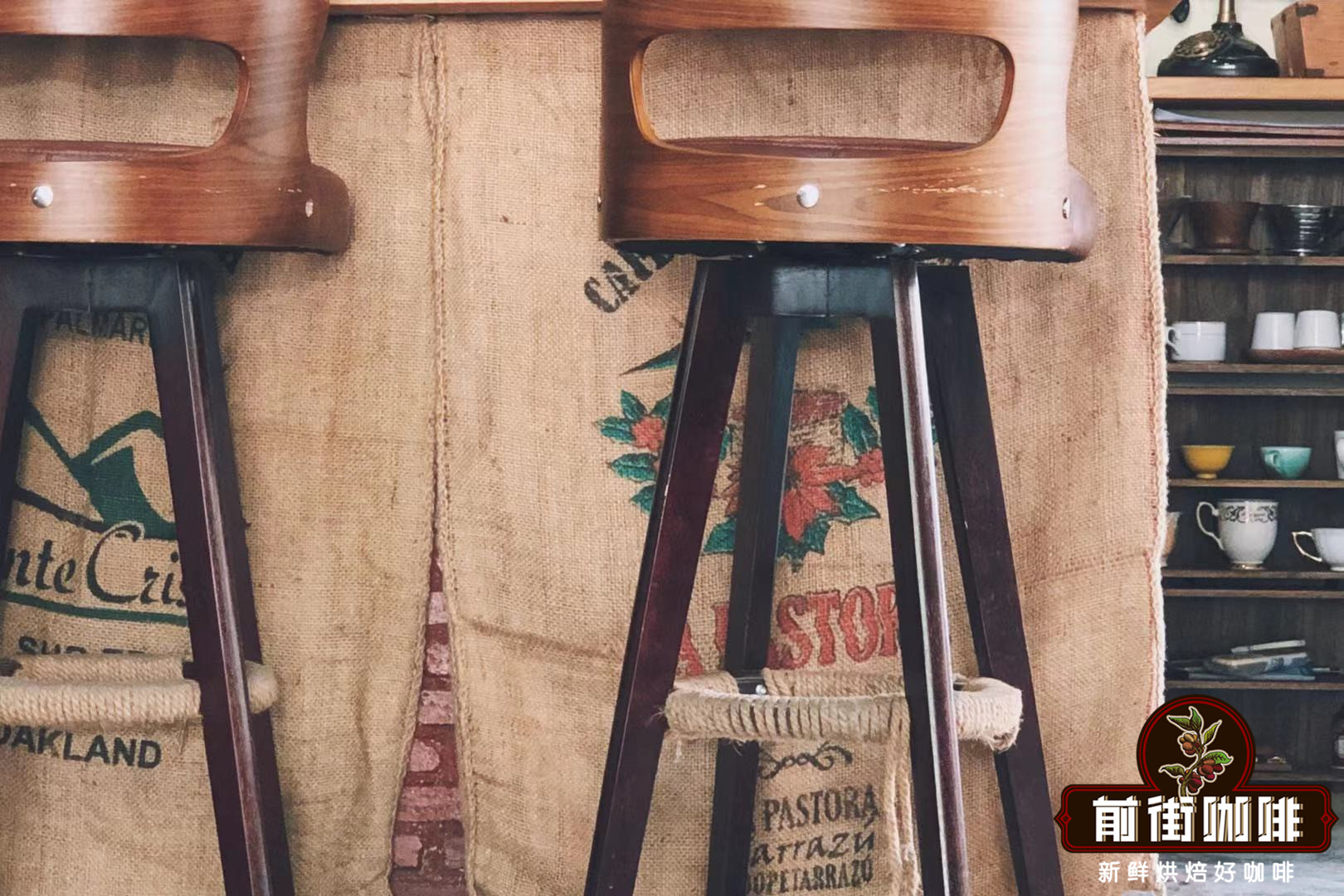
Professional coffee knowledge exchange more coffee bean information please follow the coffee workshop (Wechat official account cafe_style)
With the development of the third wave of boutique coffee, more and more people pay attention to individual coffee beans. Qianjie Coffee has entered the coffee industry since 2013, focusing on coffee beans.
At present, Qianjie Coffee has more than 30 individual coffee beans on display in the store, and the varieties sold online also change with the changes of the new production season. Whether they are customers in the store or those who buy coffee beans online, they will more or less ask the question of Qianjie coffee, that is, what kind of coffee beans taste good. Qianjie Coffee thinks that this problem is actually too widespread, and everyone's preferences are different, just like some people like to drink sour coffee beans, while others like coffee beans with mellow taste as the main tone.
The more than 30 beans of Qianjie Coffee can be said to cover the preferences of most guests, and different coffee beans can be recommended according to different needs, but the purpose of Qianjie Coffee is not to sell a cup of coffee or a bag of beans, but under such conditions, Qianjie Coffee can use its own experience to talk about the flavor of coffee beans in different producing areas. So today Qianjie Coffee will introduce several hot and unique individual coffee beans.
Qianjie coffee is roughly divided into two categories, namely, coffee beans represented by acid and coffee beans represented by mellow feeling.
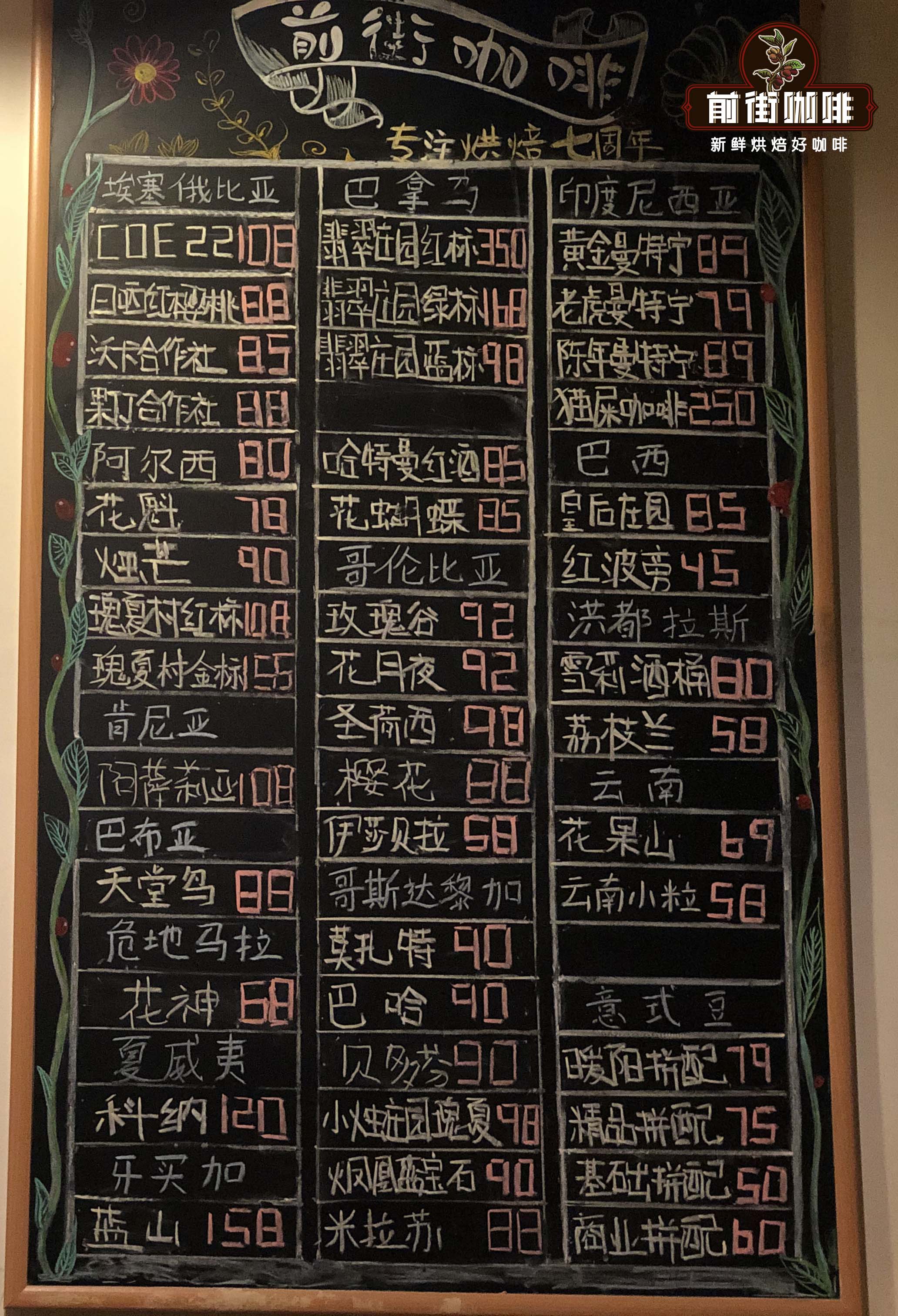
Coffee beans represented by acid
1. Ethiopian Yega Snow Prunus Cherry in Qianjie
Producing area
Yejia Xuefei
Manor
Altland Manor
Altitude
1700-2200m
Grade
G1
Variety
Primary species
Treatment method
Insolation
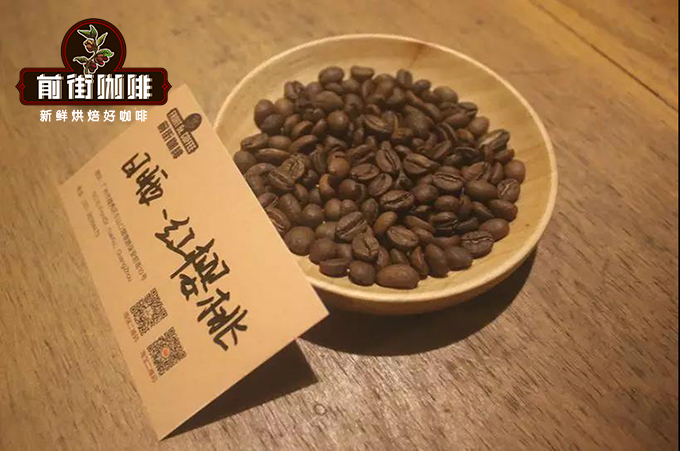
Ethiopia lies to the east of the African continent. The "Gedeo zone region" to which Yega Xuefei belongs is located in the "southern ethnic states" in southwestern Ethiopia.
Yirga cheffe is a small town in Ethiopia, 1700-2100 meters above sea level. It is one of the highest coffee producing areas in the world and is synonymous with Ethiopian boutique coffee. Lake Turkana, Lake Abaya and Lake Chamo bring rich water vapor here.
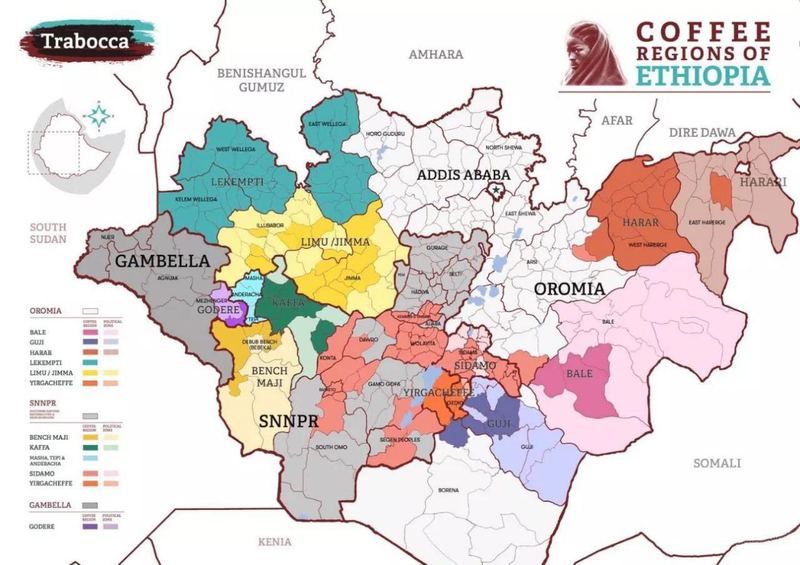
[Yega Sheffield Red Cherry Coffee Grade]
ECX (Ethiopian Commodity Exchange Ethiopian Commodity Exchange) defines the defect rate of coffee beans according to its classification, which is G1 and G2 respectively. G1 represents less than 3 defective beans per 300g raw beans, G2 represents 4-12 defective beans per 300g raw beans.
[coffee bean varieties]
The variety of this coffee bean is native, and most Ethiopian coffee varieties are named after this name, in fact, because there are so many varieties, it is like the natural gene bank in Arabica, on the one hand, there are many varieties, and it is difficult to identify and classify them. On the one hand, the Ethiopian government is unwilling and unable to disclose the information of these varieties for the sake of protection. However, Qianjie Coffee found that at the COE contest held in Ethiopia this year, Ethiopian beans also began to have different varieties of names, all named after numbers.
[sun treatment]
Sun treatment is also known as natural treatment, hand-harvested high-sugar coffee cherries, placed on the viaduct or open space exposure, the exposure process should be timely stirring to avoid uneven drying or excessive fermentation. Dry completely after 2-4 weeks until the water content reaches 12%. Use a sheller to remove the pulp and peel.
[red Cherry Project]
The so-called red cherry actually refers to the red cherry project, jointly launched by Dutch trader Trabocca and local farmers, aimed at improving the quality of small-scale farms and picking coffee fruits, not only the fruits with high maturity of full red, but also by hand, but this is only the most basic requirement. There are also corresponding requirements for the treatment of coffee beans.
The red cherry project is also a reinforcing method, which makes the farm pay more attention to the process of selecting beans, and the prices of these coffees are also relatively high. the main producing areas are Yega Sheffield, Sidamo, Penga Forest, Lekanti, Ken Bata, Irubaba, Hara, Lim and so on. These are unique flavors and can fully show the flavor of Ethiopian coffee. But in fact, today's boutique coffee is produced in the way of the red cherry project, but the unique term of red cherry coffee belongs to Ethiopia, and the red cherry coffee will be printed with Trabocca on the sack.
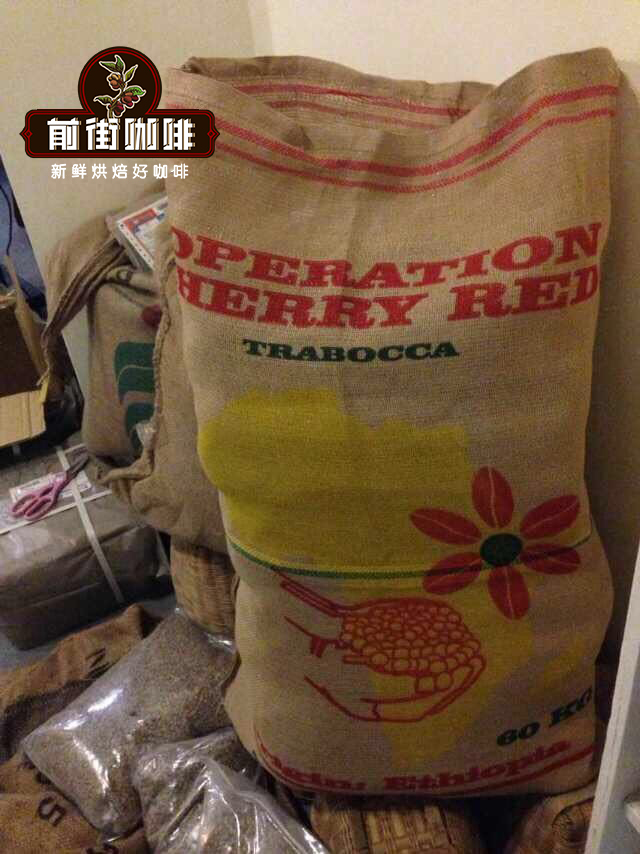
[Altland Manor]
The average planting area of each small coffee farmer here is about 0.6ha, which is composed of hundreds of coffee growers with an altitude of nearly 2000 meters, a large climate difference and fertile soil, which provides an excellent growing environment. The raw bean itself exudes a strong aroma of raisins and fermented wine.
[description of the flavor of Ye Jia Xuefei Red Cherry Coffee on Qianjie Street]
Lemon, licorice, citrus, berries, sweet orange, the overall sweetness is high, Huigan has the flavor of caramel and cream, with black tea aroma in the aftertaste.
2. Front Street, Asalia, Kenya
Producing area
Sika
Treatment plant
Asali Honey processing Plant
Altitude
1550-1750m
Grade
AA TOP
Variety
SL28 、 SL34
Treatment method
K72 washing
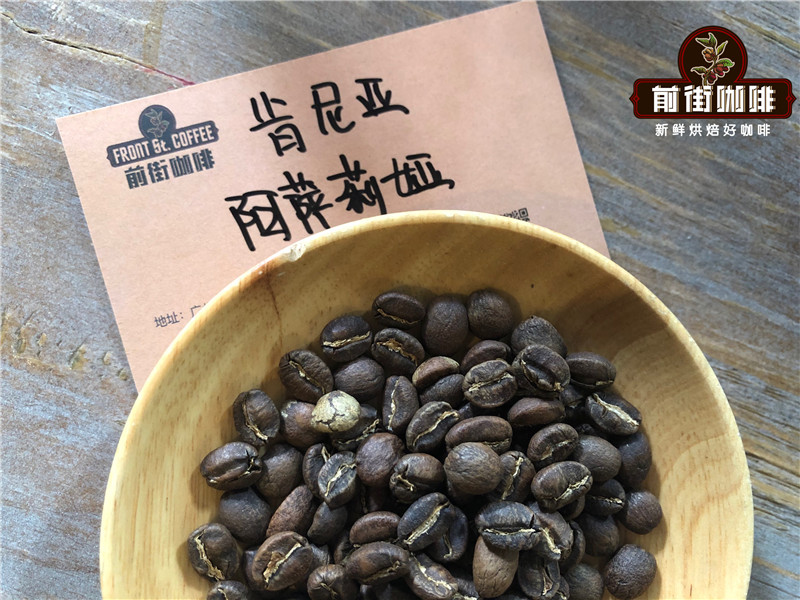
Kenya is also located in East Africa, bordering Ethiopia. The history of coffee in Kenya is not as profound as that of Ethiopia. Coffee was introduced near the 20th century, during which coffee almost circled the earth before it returned to Africa, and at that time the coffee industry began to have a new change. Kenya can be said to be the witness and promoter of this change. Kenya is different from Ethiopia, when coffee was introduced by Britain, a colonial power, and the coffee economy was developed during the colonial period, and the whole coffee system tended to be carefully managed. The selection, grading and treatment of Kenyan coffee far exceeded that of many coffee producing countries at that time, and it was not until decades later that other countries realized the advantages of fine management and followed suit.
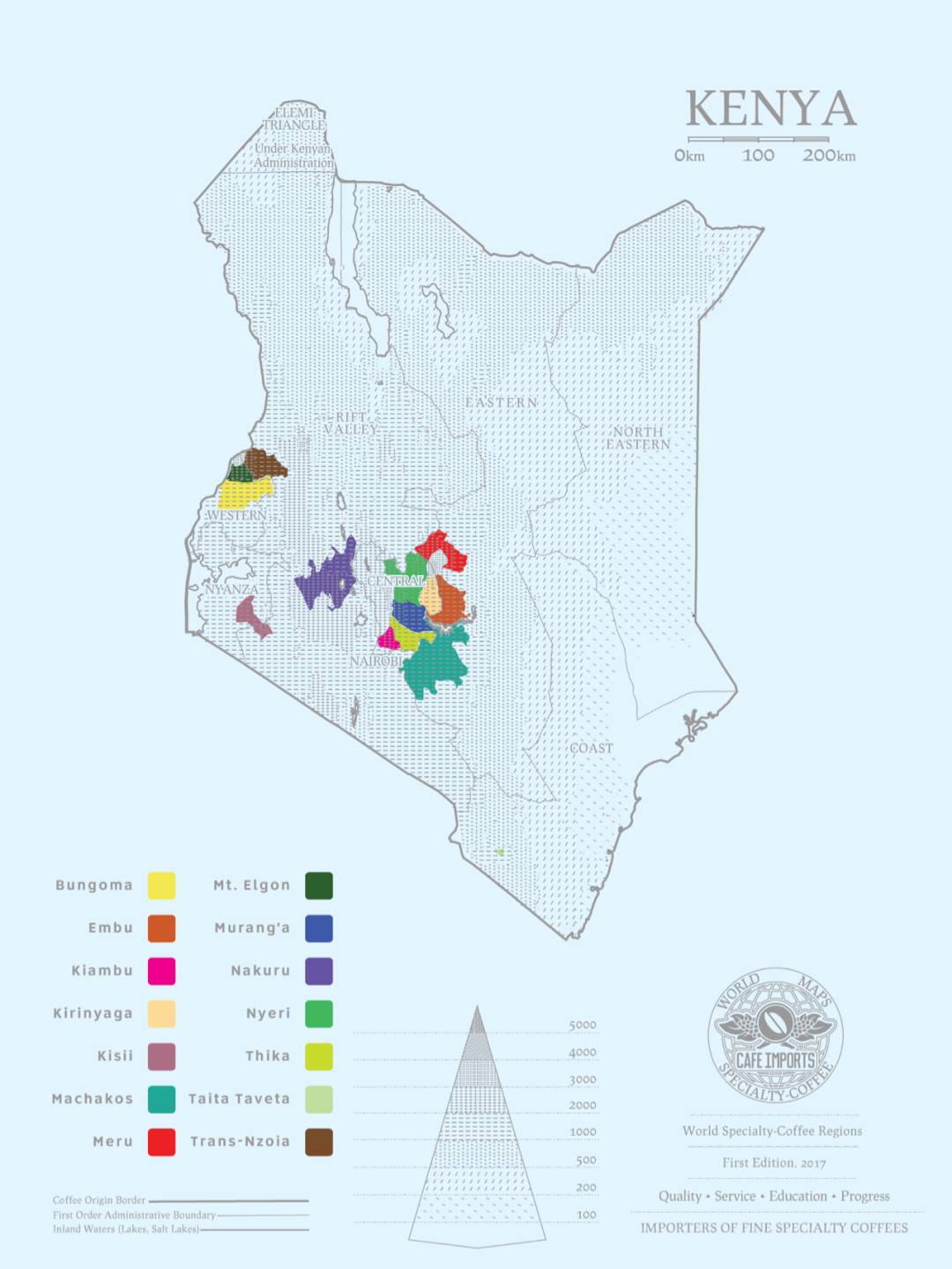
[Kenyan Coffee Grade]
Kenya is graded according to the particle size and cup test results of coffee beans. According to the size, shape and hardness of coffee beans, E, AA or AA+, AB, PB, C, TT, T from high to low. For the raw coffee beans of AA grade and AB grade, the special classification of cup test results (not officially recognized by Kenyan countries, made by exporters) is added, and the order from high to low is TOP, PLUS (+) and FAQ.
[coffee bean varieties]
In 1922, the Scott Agricultural Laboratory (Scott Labs) was established in Kenya to engage in coffee cultivation research. More than 10 years after its establishment, the laboratory selected SL28 and SL34 from 42 kinds of coffee, which provided a good start for the development of coffee industry. SL28 and SL34 are selected varieties after many times of cultivation. SL28 belongs to the bourbon gene group, with the original bourbon bright tonality and rich acid. The lineage of SL34 is closer to the gene of iron pickup, and its acid quality is milder than that of SL28. SL28 and SL34 currently account for 90% of Kenya's production, and South America is also actively introducing SL28 as a planting variety.
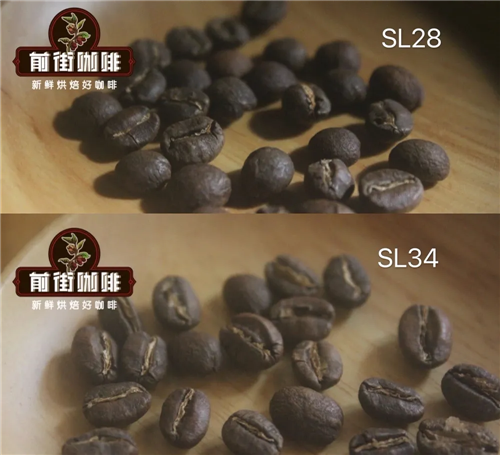
[K72 Water Washing Method]
Kenya's washing method is world-famous, but it is different from ordinary washing method. Kenya's K72 treatment method means that its washing fermentation time is as long as 72 hours, and the general washing treatment method rarely exceeds 36 hours. This long fermentation time creates the unique acid quality of Kenya's fine coffee. The treatment process is to select coffee fruits with high maturity, remove the peel and pulp, soak in a tank to ferment and remove pectin, which takes 72 hours, and then take them to dry until the moisture content reaches 12%.
[Front Street Kenya Asalia Coffee Flavor Description]
Cherry fruit, berry aroma, sour taste, fruit juice, sweet taste in the middle, lingering tea.
3. Front Street Panama Flower Butterfly
producing areas
Poquet
altitude
1600-1650m
level
SHG
varieties
Guixia (70%), Kadulla, Kaduai
approach
water washing
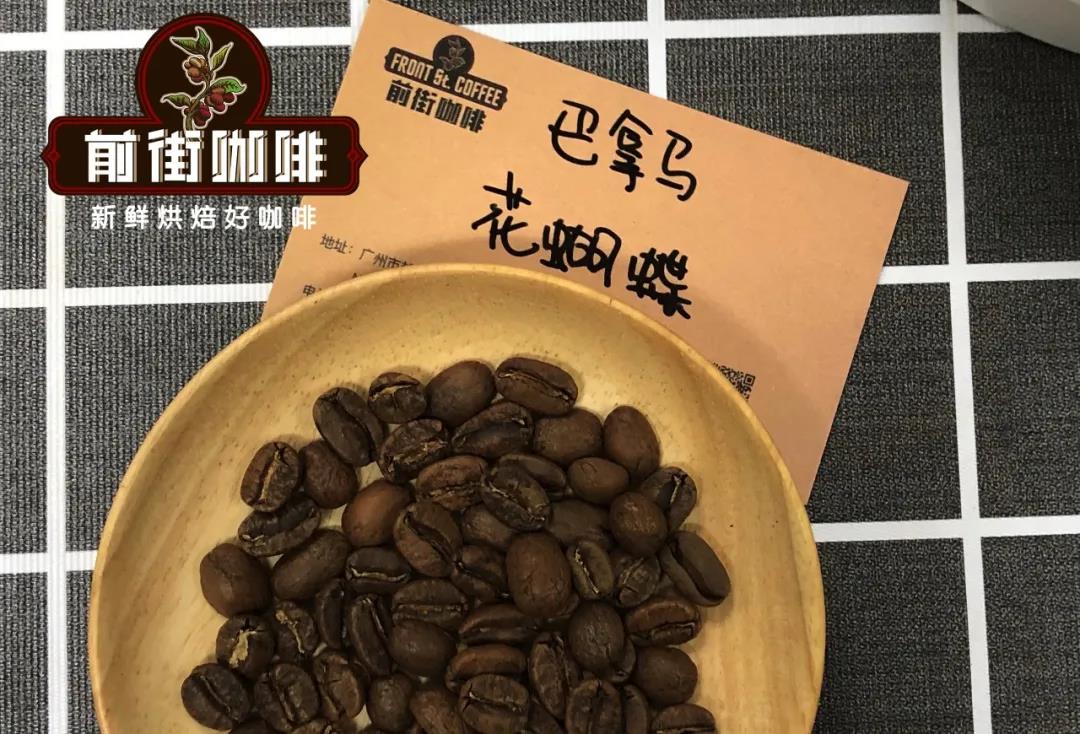
Panama is a Central American country bordered by Costa Rica to the west and Colombia to the east. Panamanian coffee came to Panama with European immigrants in the 19th century, when Panama had been independent from Spain for about 50 years, but as an agricultural product, Panamanian coffee did not really gain a foothold until the past 20 years.
In terms of climate, Panama is near the equator, with a tropical maritime climate, humid during the day and cool at night, with an annual average temperature of 23-27C °, drought and rain throughout the year, and an average annual precipitation of 1500-2500 mm.
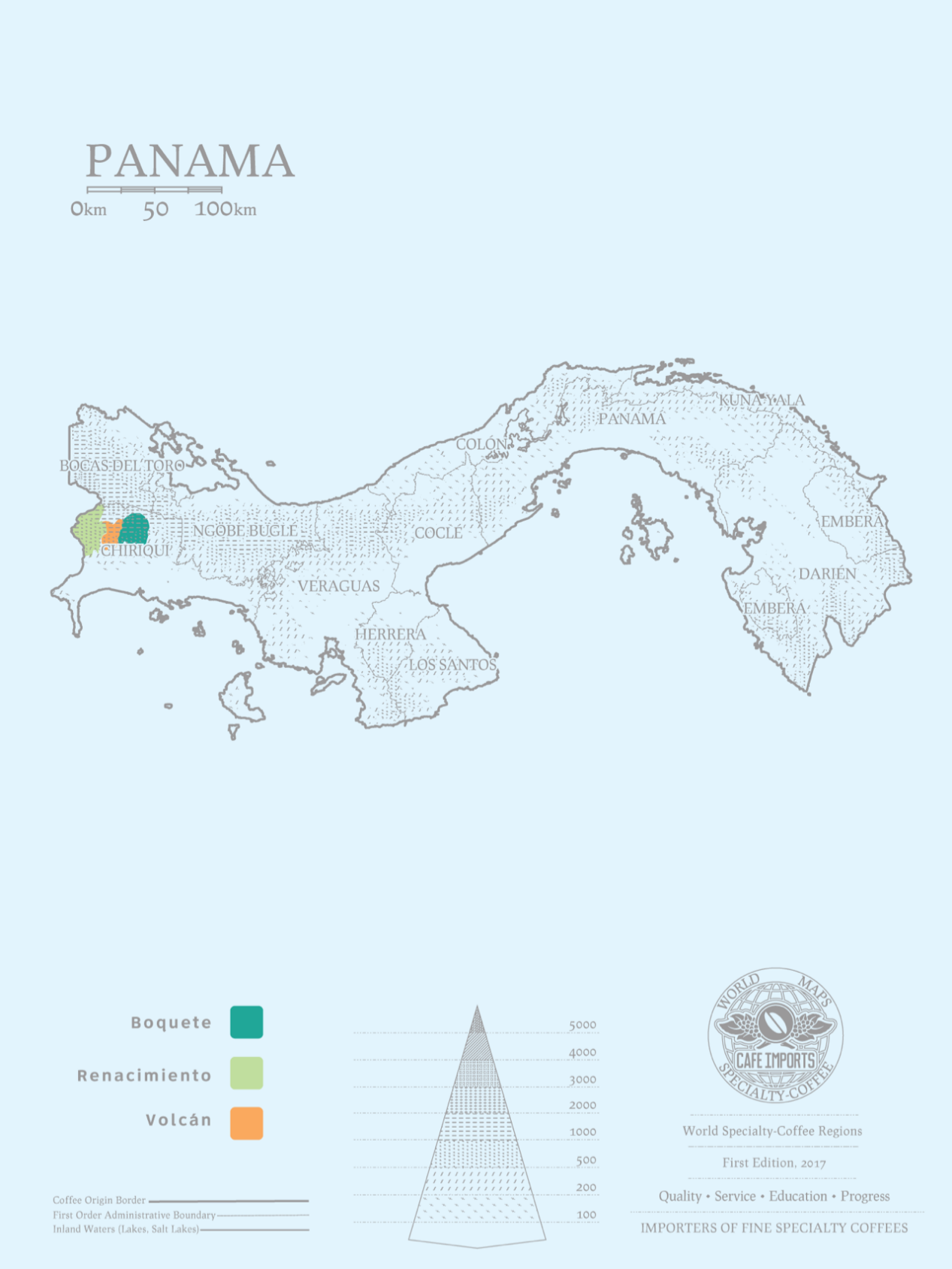
[Panamanian Coffee Grade]
SHG: full name Strictly High Grown, growing above 1200 meters above sea level
HG: full name High Grown, growing at 9-1200 meters above sea level
CS: full name Central Standard, growing at 600-900m above sea level
[coffee bean varieties]
Flower butterfly is composed of 70% rosy summer coffee varieties, including Rosa geisha, Kaddura Caturra and Kaduai Catuai. Surprisingly, on the basis of very excellent quality, the price of this coffee bean is very cost-effective.
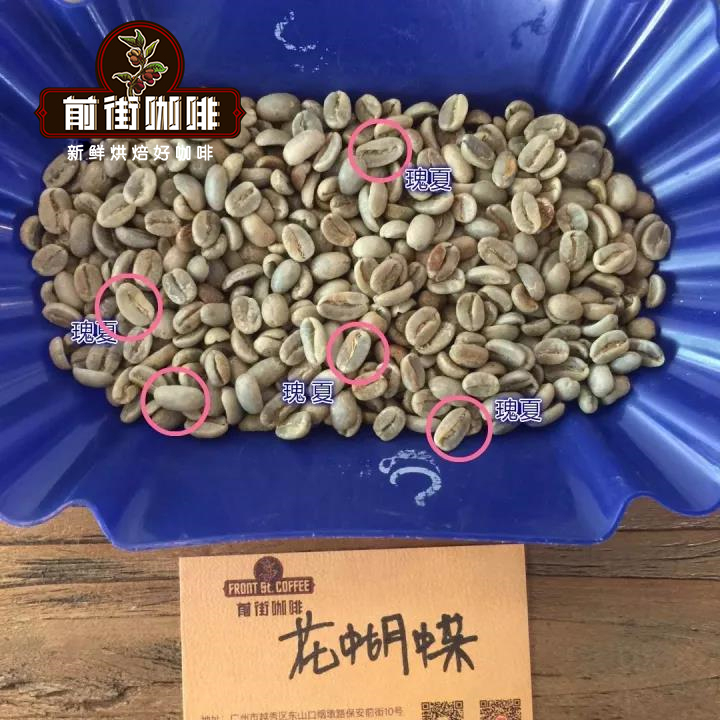
[washing treatment]
After picking the coffee fruit, remove the floating beans, remove the peel and pulp, and then soak the coffee beans in the fermentation tank. The enzymes in the water will soften the pectin, and the natural yeast will decompose the sugar in the mucus. This process is called fermentation. After the fermentation is completed, the coffee beans are moved to the sun field to dry. In the process of drying, the coffee beans need to be turned constantly to ensure the uniformity of drying until the moisture content is 12%.
Many customers will ask what is the difference between washing and insolation. The answer to Qianjie coffee is very simple, that is, washing highlights sour and sunlight highlights sweetness, because the substantial difference between the two operations lies in whether they retain the role of pulp. Sun exposure retains the flavor of flesh, while washing does not. It is also obvious from the appearance that a display area has been set up in the Qianjie coffee shop, which is used to distinguish different kinds of coffee beans. There will be a silver line in the middle of the washed coffee beans, which is silver residue, while the sun-cured coffee beans do not.
[front Street Panamanian Flower Butterfly Coffee Flavor description]
Floral aroma, black tea, berries, citrus, finish with light nuts, smooth taste, low bitterness, moderate acidity, medium finish, etc.
Coffee beans represented by mellow thickness
4. Front Street, Jamaica Blue Mountain.
Producing area
Newcastle area
Manor
Clifton Manor
Altitude
1310m
Grade
Blue Mountain No.1
Variety
Iron pickup
Treatment method
Water washing
Jamaica is an island located in the Caribbean Sea. The Blue Mountain of Jamaica is the highest mountain in the western Caribbean Sea (2256 meters high). The unique flavor of Blue Mountain Coffee is related to the unique geographical location and climatic conditions of Blue Mountain.
Blue Mountain is located in the coffee belt of 25 degrees north latitude, with fertile new volcanic soil, fresh air, no pollution, rainy all year round, high humidity, large temperature difference between day and night, rich in nitrogen and phosphorus, very suitable for coffee growth, fertile volcanic soil, regular rainfall and hazy clouds on the island, so that it is far from the sun. All these factors combine to create Blue Mountain Coffee.
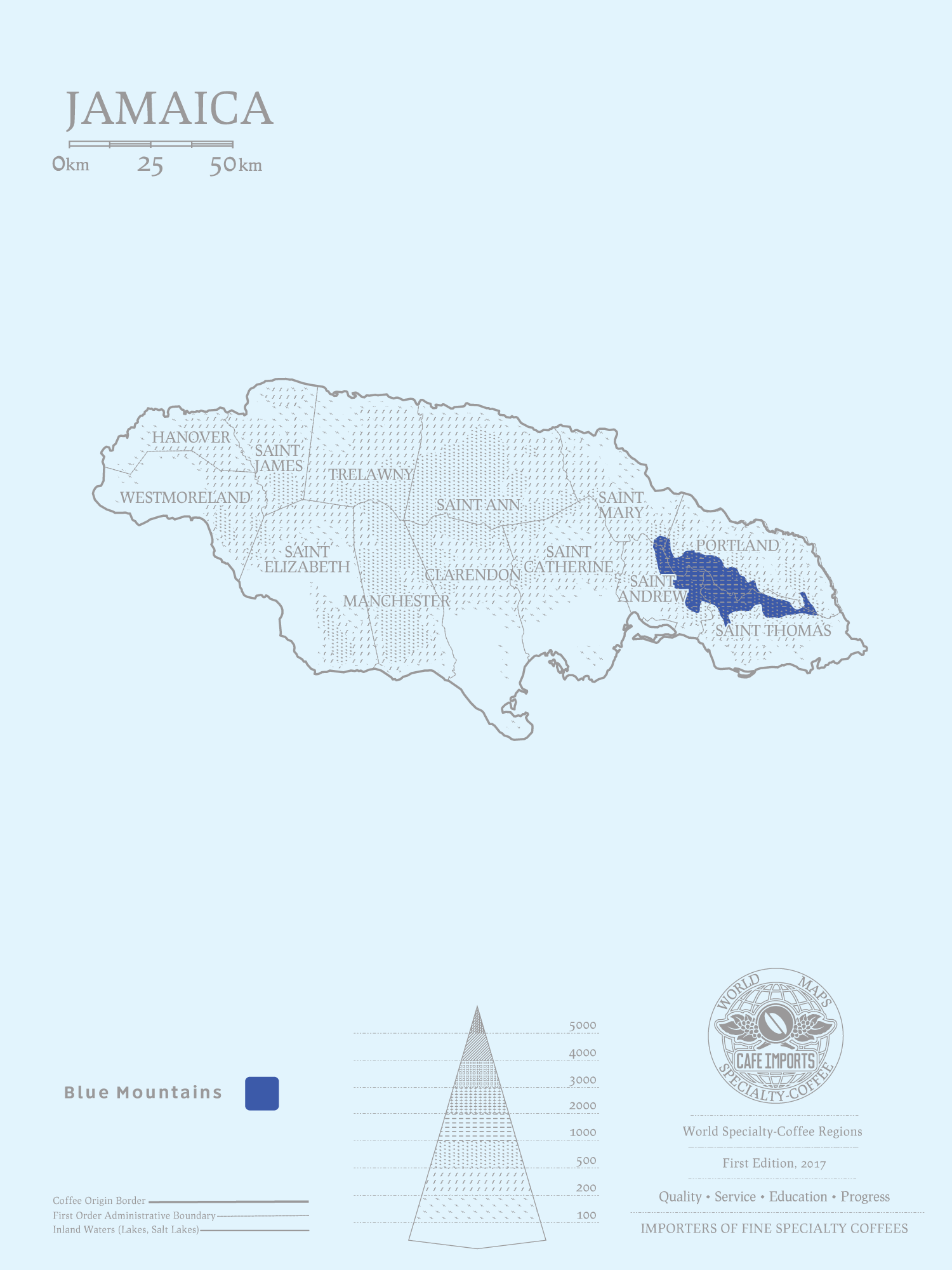
[Jamaican Blue Mountain Coffee Grade]
There are three grades of coffee in the Blue Mountains of Jamaica: blue Mountain Coffee (Blue Mountain Coffee), Alpine Coffee (Jamaica High Mountasin Supreme Coffee Beans) and Jamaican Coffee (Jamaica Prime Coffee Beans).
Among them, Blue Mountain Coffee and Alpine Coffee are each divided into two grades. In terms of quality, the order from top to bottom is: blue Mountain 1, Blue Mountain 2, Gaoshan 1, Gaoshan 2, Jamaican Coffee. The Blue Mountain Coffee selected by Qianjie Coffee has the highest grade, which is Blue Mountain one.
From top to bottom in terms of quality, NO.1, NO.2, NO.3 and PB,PB are round beans. According to the standard of CIB, the basic standard of blue mountain raw bean of NO.1 is beans with more than 17 mesh, defect rate less than 3%, moisture content about 13%, and so on.
[coffee bean varieties]
Typica, which is native to Ethiopia and southeastern Sudan, is one of the oldest Arabica species. Its top leaf is red copper, called red top coffee, also known as the old variety of small grain coffee. Because of the low yield and the difficulty of cultivation, the price is much higher than the ordinary small-grain coffee. But its taste performance is excellent, it is recognized as a boutique coffee variety.
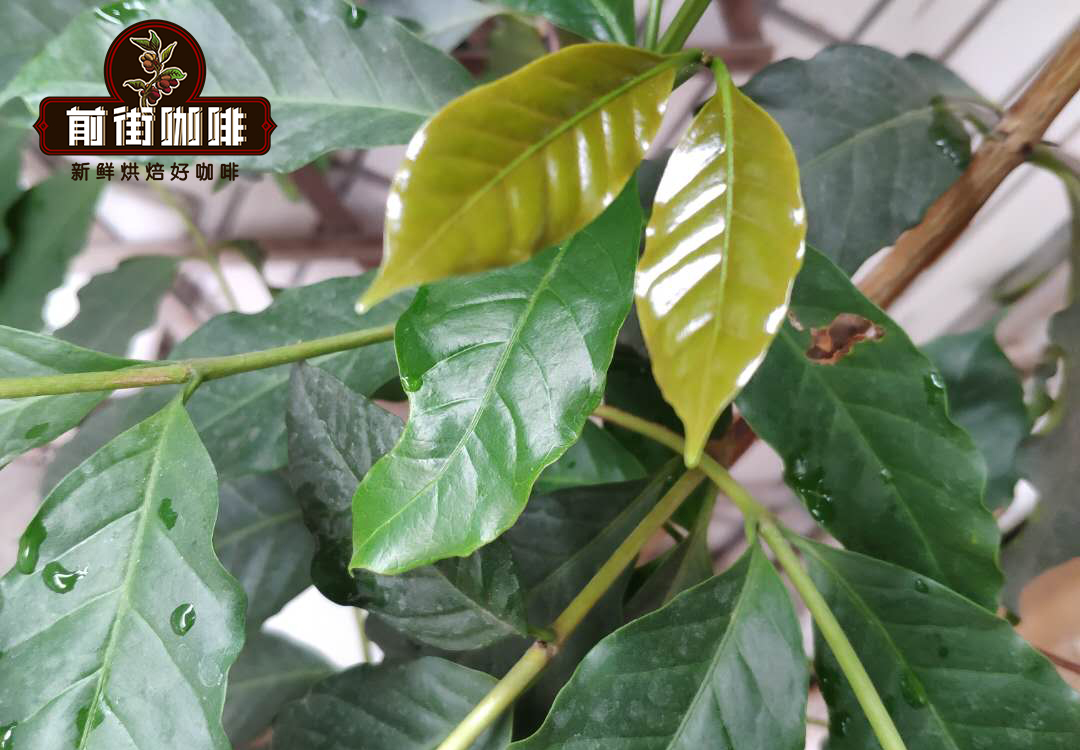
[washing treatment]
After picking the coffee fruit, remove the floating beans, remove the peel and pulp, then soak the coffee beans in a fermentation tank to soften the pectin, wash and remove the pectin constantly, and move the coffee beans to the sun field to dry. In the process of drying, you need to constantly turn the coffee beans to ensure the uniformity of drying until the moisture content is 12%.
[Clifton Manor]
The Blue Mountain area is a small area with a planting area of only 6000 hectares, and it is impossible to grow all the coffee marked "Blue Mountain" there.
Today's Clifton Manor is the largest estate in the area and is also small-scale cultivation by international standards, many of which are small landowners whose families have been working on the land for two centuries.
Clifton Hill is an ancient coffee producer that is still functioning in Jamaica, and only Clifton Farm in Jamaica has a "tropical rainforest" logo. The logo can be certified only if it meets the Sustainable Agricultural system Standards, and there is a rainforest certification mark on the barrel.
Clifton Manor began to grow and produce coffee as early as the mid-18th century (around 1750). The coffee planting and processing area here falls at an average of 4300 feet (1310.64 meters), with sufficient altitude, mild afternoon cloud shade, adequate sunshine and mineral-rich planting soil to provide good growth conditions for coffee plants. it also prolongs the ripening of coffee cherries.
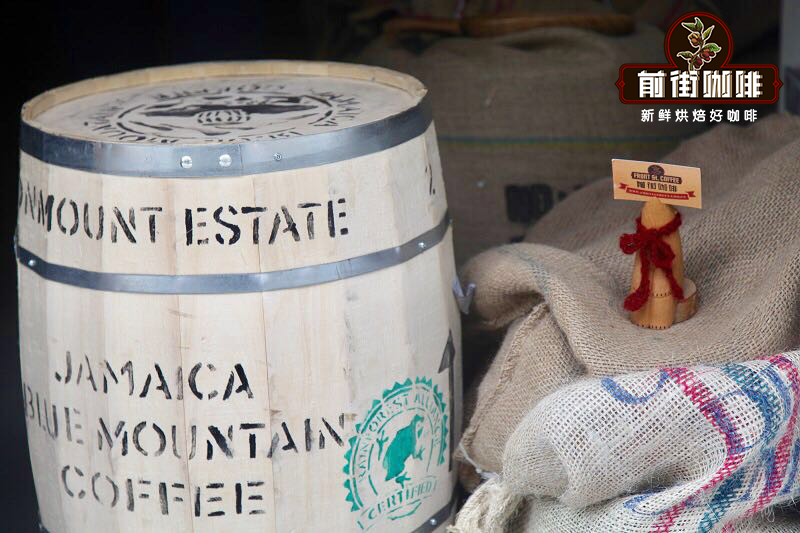
[description of the flavor of Jamaica Blue Mountain Coffee in the front street]
The palate is full-bodied and mellow, with sweet, sour and bitter flavors perfectly, with a very strong mellowness.
5. Indonesia Gold Manning, Qianjie
Producing area
Sumatra
Company
PWN
Altitude
1100-1600m
Grade
G1
Variety
Iron pickup
Treatment method
Wet planing method
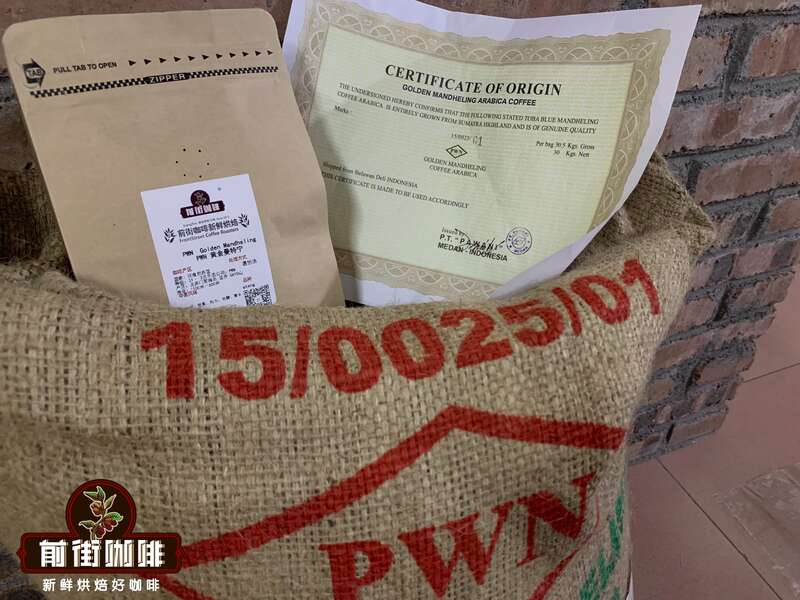
Indonesia is located in southeastern Asia, and its coffee history dates back to 1696. Coffee farmers in the Netherlands tried to find a wider place to grow coffee and finally identified the Indonesian island of Java. After 30 years, Indonesia has laid a sufficient foundation in the coffee market.
Today, however, Indonesia's coffee is represented by Mantenin, which is not unexpected, because most of the Javanese coffee sold to Europe came from Sumatra, and Mantenin came from Sumatra. So Sumatra can be said to be an important coffee producer in Indonesia.
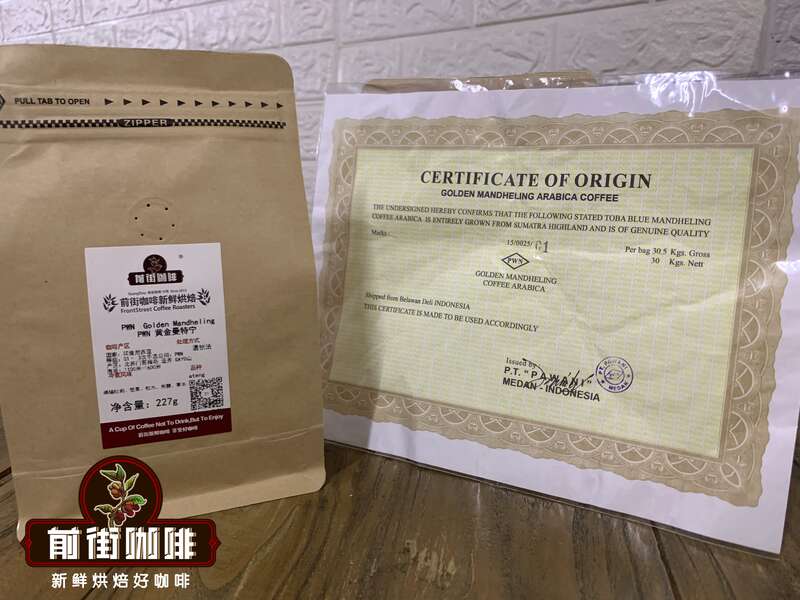
[Indonesian Coffee Grade]
Indonesian coffee beans are classified according to the proportion of defective beans. Indonesian beans are mainly divided into six grades, namely G1-G6. There are less than 3 defective beans (300g raw bean samples), which belongs to the highest grade G1.
[coffee bean varieties]
Typica, which is native to Ethiopia and southeastern Sudan, is one of the oldest Arabica species. Its top leaf is red copper, called red top coffee, also known as the old variety of small grain coffee. Because of the low yield and the difficulty of cultivation, the price is much higher than the ordinary small-grain coffee. But its taste performance is excellent, it is recognized as a boutique coffee variety.
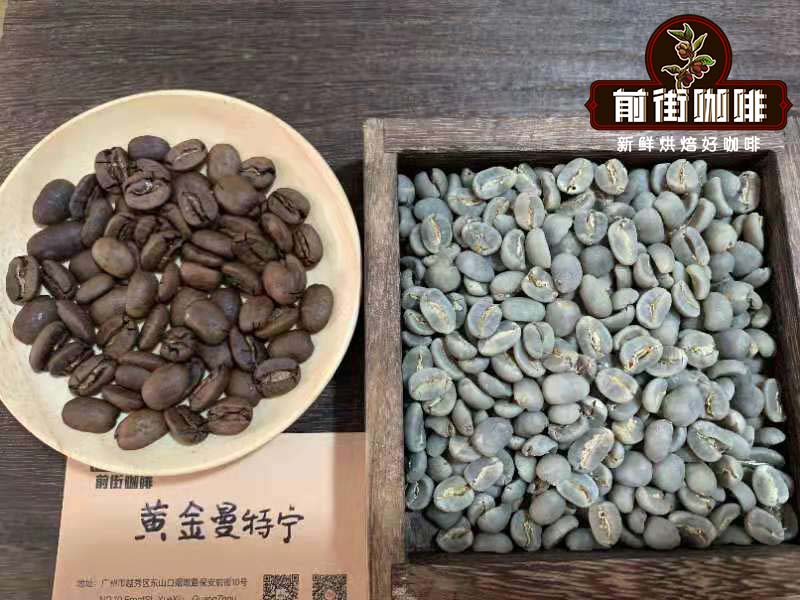
[wet planing]
Mantning mostly uses Sumatra's unique coffee bean treatment, the wet planing method. As the local weather is often dominated by Rain Water, with continuous typhoons, it is unable to achieve the good weather needed for the sun, and the local economy is not good, so it is also impossible to use the more expensive way of washing, thus giving rise to the wet planing method with local characteristics.
In the first stage, the peel and pulp were removed by a wooden peeling machine, and after fermentation for 3 hours, the moisture content was reduced to 30-50% of semi-dry and semi-wet.
In the second stage, the pectin and sheep skin were removed and the latter part of the drying process took 2-4 days, and the moisture content was reduced to 12-13%.
On this basis, Golden Manning has increased the number of screening, with more than three manual screening, so that Golden Manning has the characteristics of uniform size and low defect rate.
[PWN]
PWN (Pwani Coffee Company) registered gold manning, while Japanese companies registered "Gold Top Mandheling", or tripod gold manning. In fact, there is little difference in flavor performance between the two, but due to different brands and different marketing strategies, it is also possible to lead to a change in public opinion, so it depends on which of the two gold manning is better. PWN is the first company to export gold manning to Japan, and Qianjie Coffee is also a buyer of PWN gold manning.
[Qianjie Indonesian Gold Manning Coffee Flavor description]
The layers are changeable, mellow and clean, with a high sense of balance, intense nutty and caramel aromas, chocolate aromas and a long finish.
6. Brazilian Queen Manor on Qianjie
Producing area
Morgiana, Sao Paulo
Manor
Queen's Manor
Altitude
1400-1950m
Variety
Yellow bourbon
Treatment method
Insolation
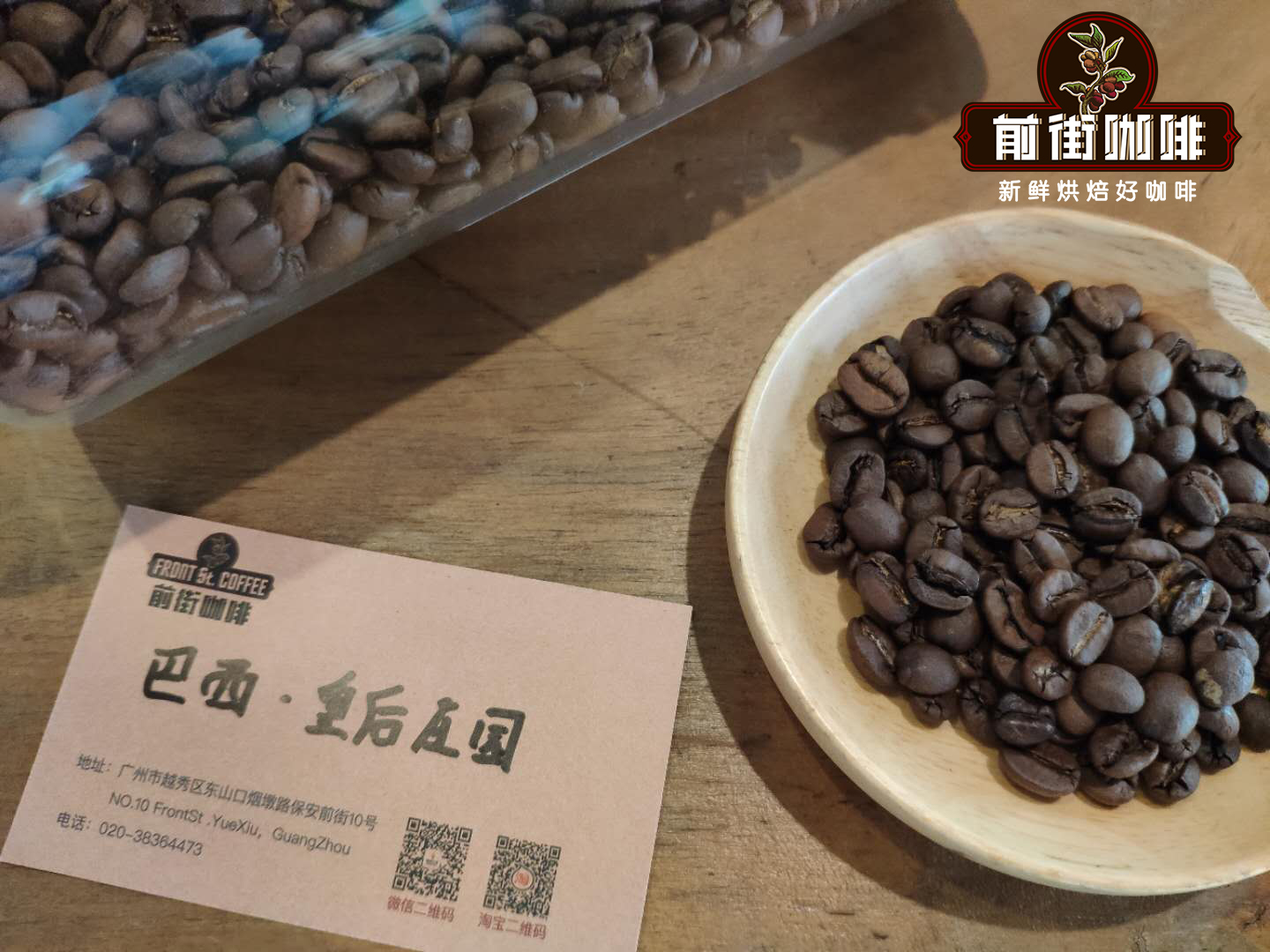
Brazilian coffee beans were introduced from French Guiana (a country in northern South America) in 1720. Brazil was then a colony of Portugal, while many of the other South American countries were colonies of Spain, so most of the countries in South America spoke Spanish, while Brazil spoke Portuguese.
In order to introduce Guyanese coffee beans to Brazil (which was severely prohibited from other countries at the time), Portuguese officers stationed in Brazil captured the heart of the Guyanese governor's wife and succeeded in bringing coffee seeds to Brazil. Since then, coffee has adapted rapidly in Brazil, spreading from the north to the southeastern state of Sao Paulo. By 1845, Brazilian coffee beans accounted for 45% of the world's coffee beans and became the main source of income in the state of Sao Paulo.
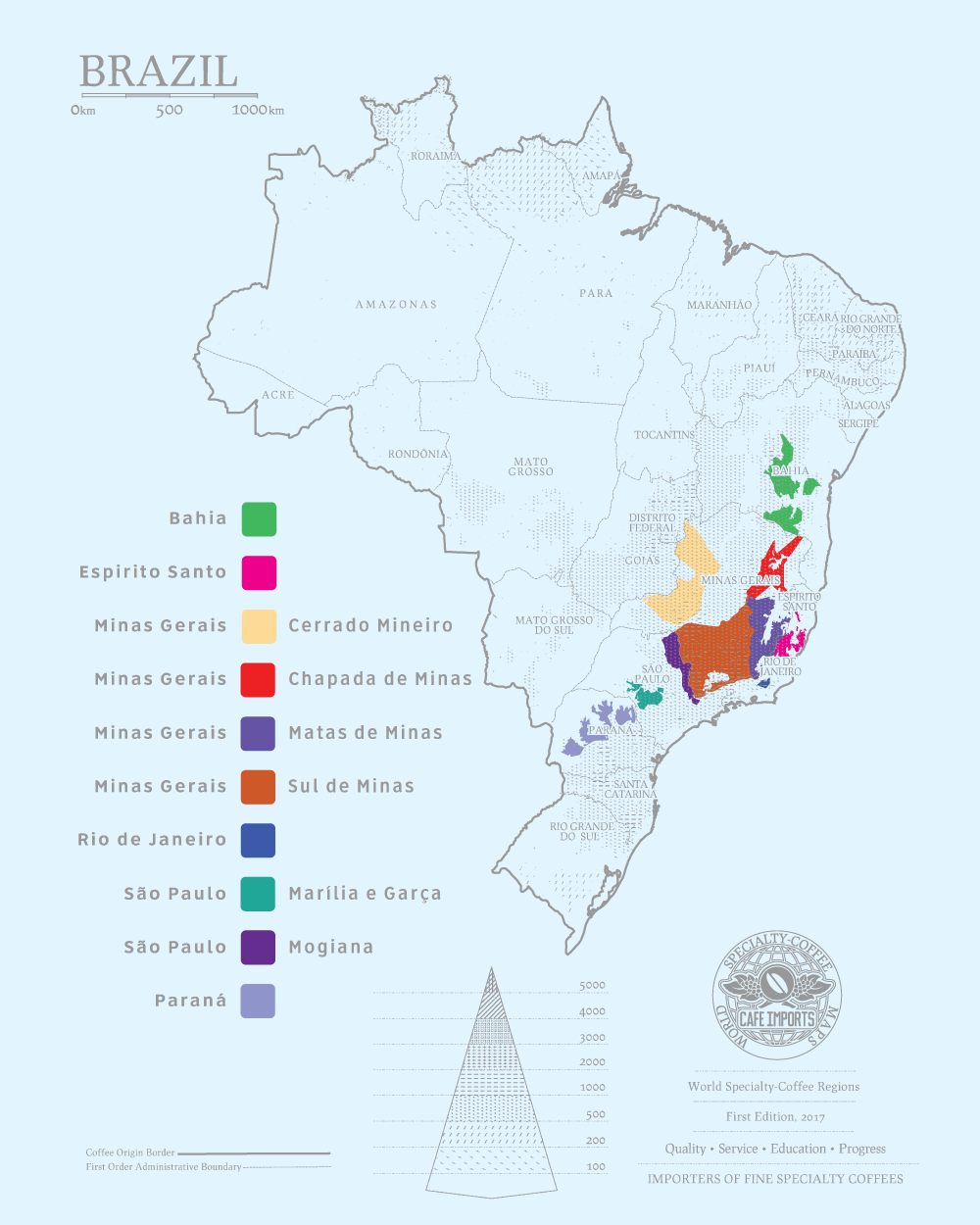
[Brazilian Coffee Grade]
Brazil is relatively low in altitude among many coffee-growing countries in Central and South America, so Brazil does not emphasize hard beans that can only be grown at high elevations, as in other countries such as Colombia. Instead, coffee beans are graded according to particle size, defect rate, cup score and flavor.
Flavor grades: from high to low, Strictly Soft is very supple, Soft is very supple, Softish is a little supple, Hardish is not palatable, Rioy iodine choking taste.
Classification of defect rate: according to the number of defective beans, 6 defective beans are NY.2 for every 300g raw beans. Completely flawless beans can become NY.1, while completely flawless beans are rare and unable to maintain a certain supply, so among the raw beans in Brazil, the best is NY.2.
Types
Number of defective beans (per 300 grams)
NY.2
six
NY.2/3
nine
NY.3
thirteen
NY.3/4
twenty-one
NY.4
thirty
NY.4/5
forty-five
NY.5
sixty
NY.5/6
> 60
Cup test quality classification: from high to low, Fine Cup, Fine, Good Cup, Fair Cup, Poor Cup, Bad Cup. FC (Fine Cup) and GC (Good Cup) are more common.
Particle size classification: in Brazil, the largest number of coffee beans is 19 mesh, but the yield is not much, so 17 mesh, 18 mesh is the highest grade.
Types
Quality
NY.2
17-18 mesh FC
NY.2/3
14-16 mesh FC
NY.3/4
DD Quality
NY.4/5
14-16 mesh GC
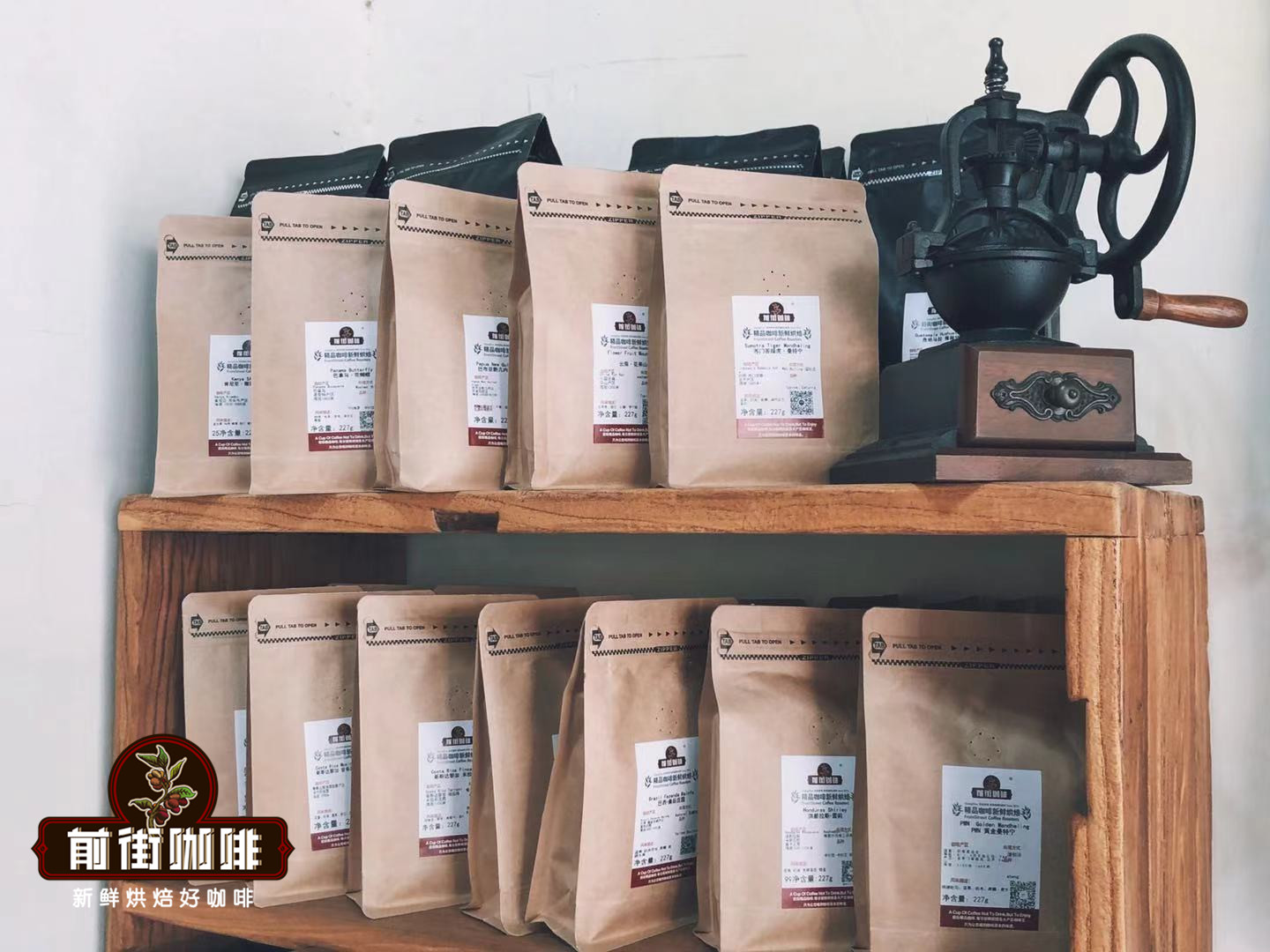
[coffee bean varieties]
Bourbon coffee variety is the second species caused by the mutation of Tippica coffee variety. Generally speaking, when it comes to bourbon coffee varieties, it will default to red bourbon coffee varieties, because its mature color is red. Yellow bourbon does not refer to the immature state of red bourbon, but the cross between bourbon and the variety of iron pickup with yellow fruit, the ripening consequence is yellow, and it has not been widely planted because of its low yield and relatively intolerant to wind and rain.
[sun treatment]
In the method of sun treatment, the suitable coffee fruit was screened and dried directly until the moisture content was 12%, and the peel and pulp was removed.
[description of coffee flavor in Qianjie Brazilian Queen's Manor]
Rich nutty, dark chocolate flavor, fermented fruit, with obvious sweetness, with a hint of lemon aroma, the overall feeling is more round.
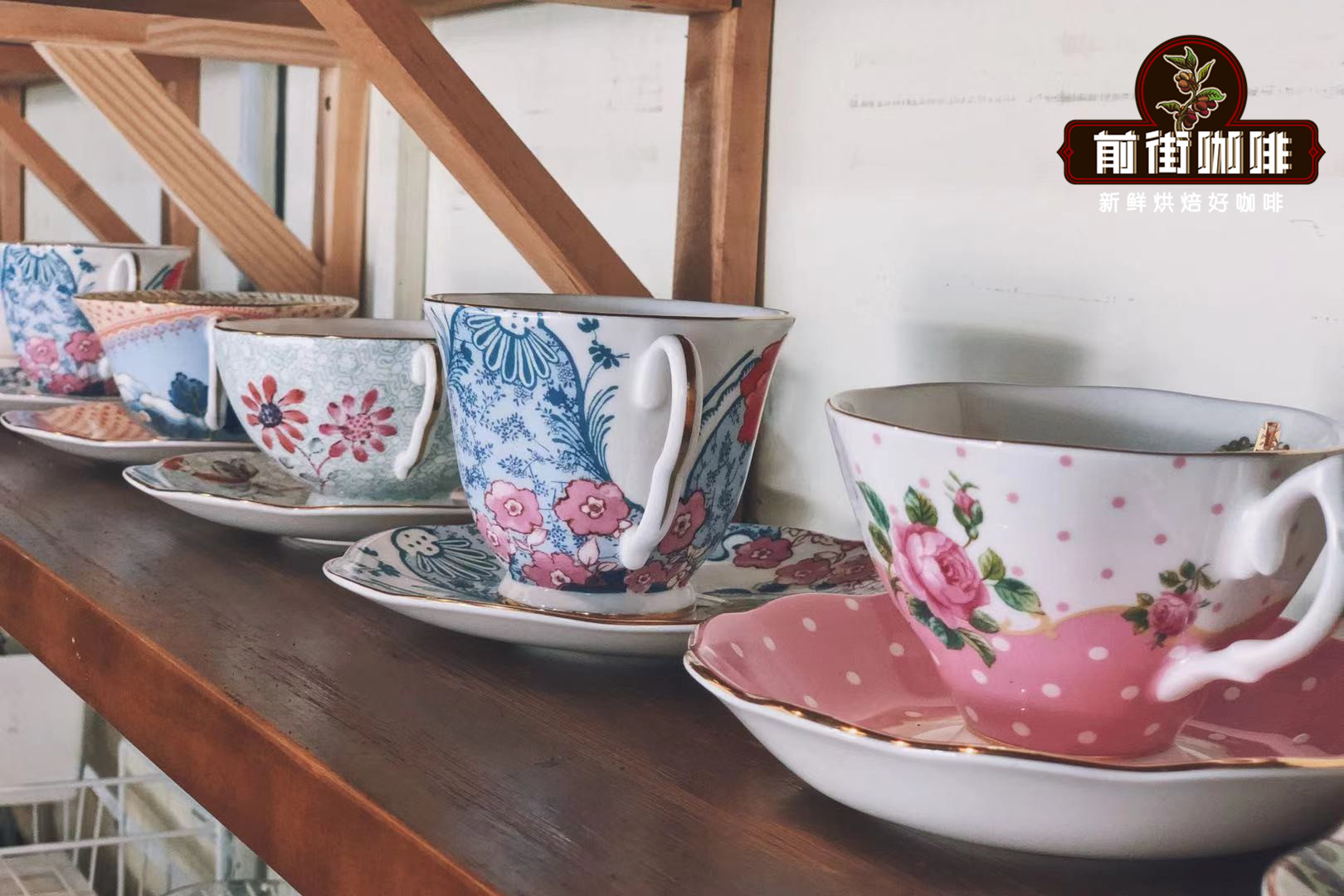
These are the six coffee beans recommended by Qianjie Coffee. Even among the three coffee beans represented by sour taste, there are differences between them. Kenya coffee beans are the most acidic, Panama butterflies are second, and Ethiopia is softer. Of the three mellow models, Golden Manning is the most mellow, Blue Mountain has a strong sense of balance, and Brazil has the softest mellow feeling.
For more boutique coffee beans, please add private Qianjie coffee on Wechat. WeChat account: kaixinguoguo0925
Important Notice :
前街咖啡 FrontStreet Coffee has moved to new addredd:
FrontStreet Coffee Address: 315,Donghua East Road,GuangZhou
Tel:020 38364473
- Prev

There are so many kinds of espresso? The description of coffee shows you how to order coffee.
Professional coffee knowledge exchange more coffee bean information please follow the coffee workshop (Wechat official account cafe_style) Coffee beginners must see: coffee types and characteristics how is coffee classified? When I was young, I used to work in a coffee shop and saw a living example that I didn't know the kind of coffee. It is said that on a sunny afternoon, there came a beautiful girl from a high school student, who was very handsome.
- Next

Fine beans from Yunnan Coffee producing areas-- introduction to the taste and flavor of Pu'er coffee with small grains
Professional coffee knowledge exchange more coffee bean information please follow the coffee workshop (Wechat official account cafe_style) China Yunnan Coffee _ Yunnan small Fine Coffee beans _ Yunnan Coffee Price Yunnan Coffee is the main and largest coffee producing area in China. At present, Yunnan coffee producing areas are mainly distributed in Simao, Banna, Wenshan, Baoshan, Dehong and other areas in the south and southwest of Yunnan.
Related
- Detailed explanation of Jadeite planting Land in Panamanian Jadeite Manor introduction to the grading system of Jadeite competitive bidding, Red bid, Green bid and Rose Summer
- Story of Coffee planting in Brenka region of Costa Rica Stonehenge Manor anaerobic heavy honey treatment of flavor mouth
- What's on the barrel of Blue Mountain Coffee beans?
- Can American coffee also pull flowers? How to use hot American style to pull out a good-looking pattern?
- Can you make a cold extract with coffee beans? What is the right proportion for cold-extracted coffee formula?
- Indonesian PWN Gold Mandrine Coffee Origin Features Flavor How to Chong? Mandolin coffee is American.
- A brief introduction to the flavor characteristics of Brazilian yellow bourbon coffee beans
- What is the effect of different water quality on the flavor of cold-extracted coffee? What kind of water is best for brewing coffee?
- Why do you think of Rose Summer whenever you mention Panamanian coffee?
- Introduction to the characteristics of authentic blue mountain coffee bean producing areas? What is the CIB Coffee Authority in Jamaica?

